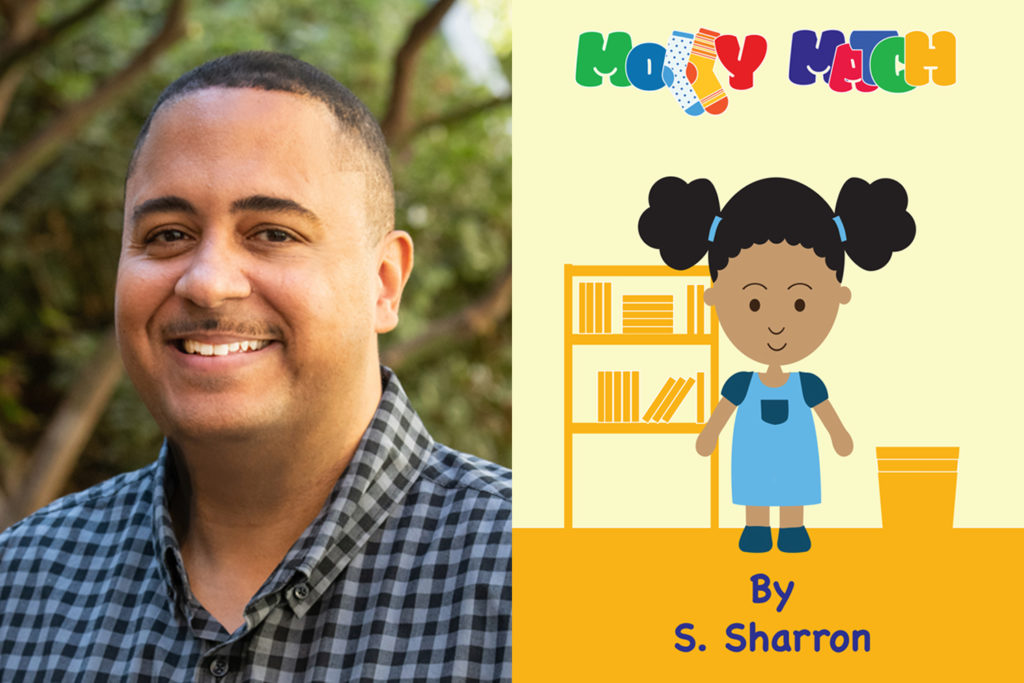Stanford staffer’s illustrations help fill need for diverse characters in children’s literature
Molly Match, a children’s book featuring a little Black girl that was illustrated by a Stanford staffer, has sparked meaningful discussions about inclusion, diversity and equity on campus.
As an African American father, Robert Coles wanted to give his young children books with characters that looked like them, but books with Black protagonists were hard to find when his daughter and two sons were growing up in the 2000s.

Stanford staffer Robert Coles provided the illustrations for Molly Match, a picture book about a little Black girl who loves socks of all colors and patterns. The book was written by S. Sharron and published by New Seed Industries in late 2020. (Image credit: Keith Uyeda)
“It was challenging to find relatable content at that time because publishers simply didn’t have a desire to reflect cultural and ethnic diversity in their books,” said Coles, who joined Stanford in 2018 as director of creative services in Residential & Dining Enterprises.
While his children are grown, Coles knew the number of books for children and young adults featuring Black, Indigenous and People of Color (BIPOC) as main characters still lag far behind those featuring whites.
According to a recent diversity survey by the Cooperative Children’s Book Center at the University of Wisconsin-Madison, children’s and young adult books featuring BIPOC protagonists represented about 25 percent of books for kids and youth published by U.S. companies in 2019 – the last year for which statistics are available.
Yet Coles thinks the situation is beginning to change, as a growing number of publishers recognize the desire and the need for books with diverse characters.
Coles made what he called “a small contribution” toward that goal when he accepted the invitation to illustrate Molly Match, a picture book about a little Black girl who loves socks of all colors and patterns. The book, written by S. Sharron, an African American woman, was published by New Seed Industries in late 2020.
Coles drew Molly as a child who wears her curly hair in double puffs tied with blue ribbons the same shade as her dress. The story includes Molly’s mother, who helps her daughter wash, dry and match her socks, so she’ll be ready to go out and play with friends.
“The main reason I got involved in the project was because the book presents a character of color as the central character,” said Coles, who is a member of the staff advisory committee for Stanford’s cross-campus Inclusion, Diversity, Equity and Access in a Learning Environment (IDEAL) initiative.
Molly Match sparks great discussions
Coles said Molly Match has sparked meaningful discussions about diversity with colleagues, including people who know him through his work producing marketing materials and campaigns for R&DE, and through his work on IDEAL and other university committees.
“A children’s book is familiar and evokes positive memories, and for those reasons, it can spark great conversations with people about topics that are not often discussed, such as diversity, representation and allyship,” he said.
He said colleagues have told him how pleased they were to see a children’s book with a Black protagonist, adding that friends of all backgrounds have bought the book for their children.
The book was the first foray into children’s literature for Coles, who said the work required a different creative approach than creating illustrations of objects or scenes that interested him visually, or portraits of the children of friends.
“I had to consider presenting a character with personality and action, while also making sure she was fun enough for a child to relate to,” he said. “It was a challenging experience, but very rewarding. I hear many kids really love her puffs.”
Illustrating a diverse series
The publisher of Molly Match has asked Coles to illustrate a new book series that will feature children of color, including Black, Latinx and Asian characters.
“The wide net of inclusion and acceptance will be a strong visual aspect of the series,” Coles said. “Having an opportunity to present figures of color to children as intelligent, positive and charismatic characters is very exciting and I’m honored to be part of the project.”
Coles, whose team produces marketing materials and campaigns for R&DE, recently created a website – with aerial footage, color photographs and apartment layouts – welcoming students to the Escondido Village Graduate Residences, which opened in August 2020. His portfolio, which is available here, includes examples of his other work for R&DE.